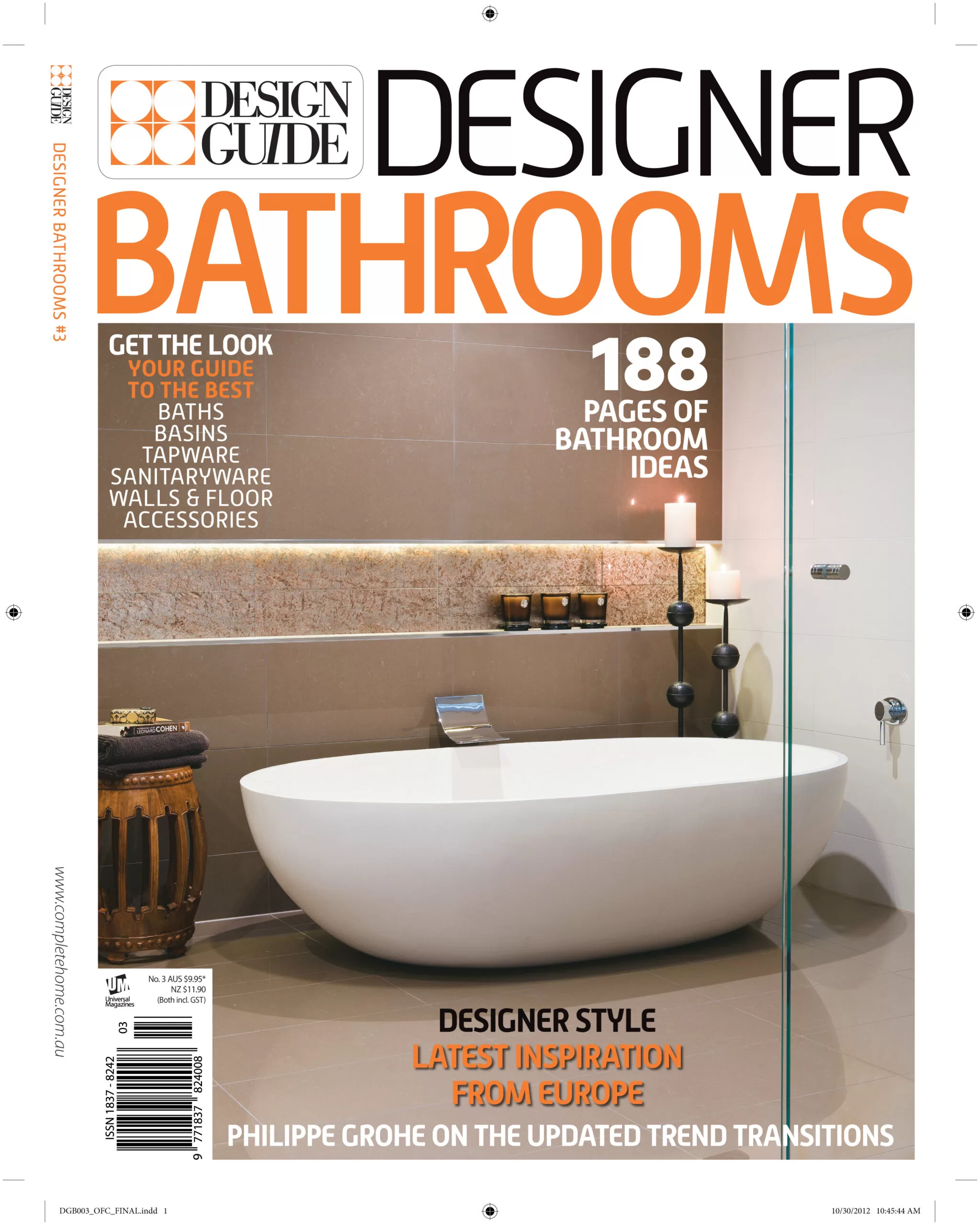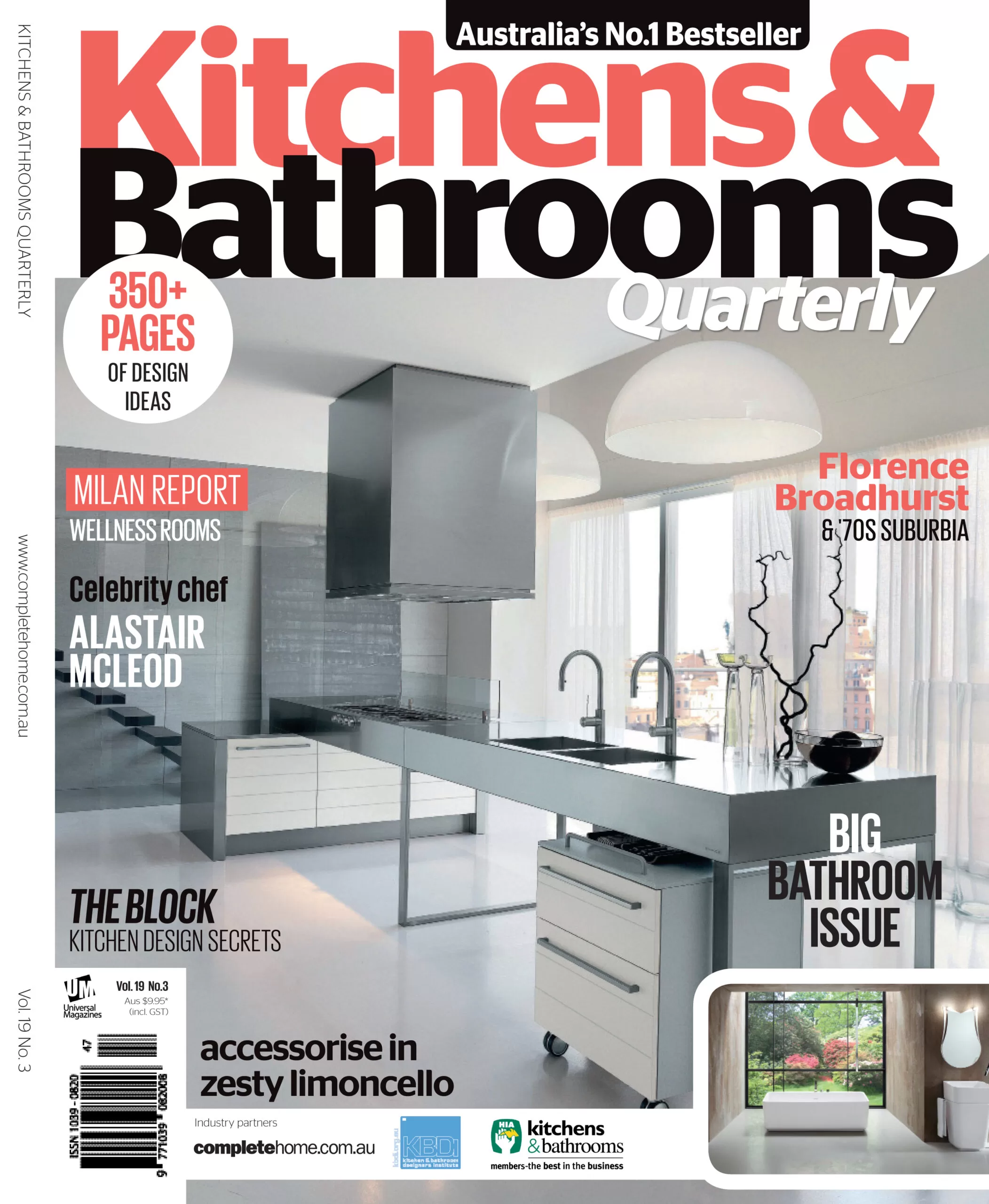 One of the most popular questions I get asked is “how do I get my project on the cover of a magazine?” and it’s certainly a tough one to answer. Choosing a cover shot isn’t as simple as just choosing the best kitchen, bathroom or home and sticking it on the cover. “Best” is a subjective term anyway.
One of the most popular questions I get asked is “how do I get my project on the cover of a magazine?” and it’s certainly a tough one to answer. Choosing a cover shot isn’t as simple as just choosing the best kitchen, bathroom or home and sticking it on the cover. “Best” is a subjective term anyway.
Whether the publication is advertorial-based or editorial-based the end result is that the cover will determine sales and therefore response for the advertiser. So publishers are invested in choosing an image that will ultimately entice the potential reader to firstly pick up the magazine, and secondly walk it to the counter and pay for it.
 The formula for which image will work on which magazine at which time of year and with which readership is long and complicated. When trawling through all the available options for cover shots we assess the elements of the image (what props were chosen, what colours are used, what is the angle of the shot, what other things can be seen in the shot, are there people in the shot, has it been shot professionally, does the image encapsulate the theme of the magazine and so many more I can’t even list them all).
The formula for which image will work on which magazine at which time of year and with which readership is long and complicated. When trawling through all the available options for cover shots we assess the elements of the image (what props were chosen, what colours are used, what is the angle of the shot, what other things can be seen in the shot, are there people in the shot, has it been shot professionally, does the image encapsulate the theme of the magazine and so many more I can’t even list them all).
From here a shortlist is compiled. Then we need to look at how the image will crop – covers are (mostly) bled off the page on three to four sides so the image needs to have enough extra space around it to allow for this cropping without losing its essence. It’s surprising how many otherwise gorgeous images must be discarded at this crucial step.
The next item on the agenda is how the image works when elements such as masthead, coverlines, barcodes and other cover details are added. Again, this process often allows the editor and publisher to cut the list of remaining contenders even further.
Even small details such as what colour was used on the magazine in the last issue will play its part in determining which images are cut and which remain as possibilities. And, possibly the last step is the most subjective of all. A team of people – from the publisher to the creative director and editor, and the marketing and distribution teams – will then all assess the remaining candidates and give their personal opinion about which image should be chosen.
 As with any judgement call in a creative arena there will be disagreements. Think of art, film, literary and culinary critics who often have widely varying opinions about the relative merits within their fields of speciality. What one person sees as the “it” factor another may dismiss as “boring”.
As with any judgement call in a creative arena there will be disagreements. Think of art, film, literary and culinary critics who often have widely varying opinions about the relative merits within their fields of speciality. What one person sees as the “it” factor another may dismiss as “boring”.
Every publishing house has slightly different methods of choosing covers and in who has the final say. In some cases magazines will shoot a specific cover themselves so it’s good to know whether you have a chance or not.
If you are keen for a cover there is no advice I can offer that will guarantee you that place in the sun but it’s always smart to look at covers which have been chosen previously to see if you can identify any common themes or directions then consider if any of your upcoming projects might fit the criteria.
Have you had a project on a cover? We’d love to see it. Send us a pic and we’ll do a cover-shot montage in a couple of weeks.





































